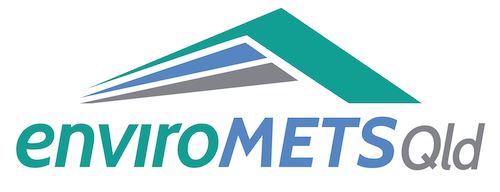
Just 50 km down the M1 from Brisbane lies, arguably, the world’s most commercially successful mining land rehabilitation; Gold Coast – Australia’s 5th largest city. Built by entrepreneurs who found a new value in old mining land.
Gold Coast - The Old Mining Town
Sand Mining History
Early 1900s development of titanium alloys and zircon based refractories created the foundation for mineral sand mining on Australia’s east coast. This led to a global search for Rutile (TiO2), Zircon (Zr2SiO4) & Ilmenite (FeoTiO2). All abundant and accessible on the “south coast” beaches of Queensland.
In 1928 a US geologist from TAMCO met Alf Neuman who was caretaker of a small plant in Tugan, Gold Coast. Subsequently, a small processing plant was built by a group of families who holidayed there.


By the late 1930’s three companies had established operations, on the Gold Coast, Mineral Deposits at Burleigh/Broadbeach, Rutile Sands at Coolangatta/ Currumbin, and TAMCO at Cudgen (South Kingscliff), where grades were reputed to be 60 - 80% heavy minerals. The first boom was for rutile needed for welding rods to build Liberty Ships.


Developing Mining Technology
It was during these years that technological innovations were developed by Gold Coast innovators. The building of large floating plants along with Joe Pinter and Ernst Reichert developing their cone concentrators, multi-start spirals, multi-stage high tension, electrostatic separators, and magnetic separators.

By 1955 all major producers had expanded and six plants operated on beaches between The Spit and Coolangatta. Three companies also operated on the adjacent Tweed Coast. Mining companies were undertaking rehabilitation by leaving now flattened sand dunes available replanted for a new post mining land use.
Holiday makers were also discovering the area, and surfing had established itself around its world class surfing breaks. Motivated by new residents the Mines Department instituted rehabilitation requirements on mined areas.

Today’s Mining Legacy
In 1958 the boom passed and mining on the Gold Coast started to wind down during the ‘60s. Various mergers led Associated Minerals to become Iluka Minerals. The Neumann Group evolved into a successful dredging operation which has developed most of the canal estates on the Gold Coast. Neumann’s also manufactured and supplied dredges to various mining operations around the world. Mineral Deposits continues to prosper as Mineral Technologies, a global operation owned by Downer and still based on the Gold Coast.
For more history; refer Graham Balderson’s AIG paper https://www.aig.org.au/wp-content/uploads/2019/07/Mineral-Sand-Mining-on-the-Gold-Coast.pdf
Gold Coast - The International City
Repurposing for Tourism
Tourism development kicked off in the 1960s, with Baby Boomers and their young families. Entrepreneurs, who had no history in mining, recognised the opportunity to repurpose the flat stable land into holiday housing estates and tourist destination facilities. The modern Gold Coast was born.

Gold Coast is now Australia’s 6th largest city (700,000 residents). It’s ‘World Surfing Reserve’ stretches 16km along what 60 years earlier was focused on mining.
It’s an iconic international tourist destination that In 2019, contributed $5.9 billion into the local economy welcoming 14.2 million guests annually and was responsible for more than 44,000 jobs across more than 4,600 tourism businesses.

Southport 1944 - The MDS Processing Plant. Today; the MDS plant was to right of bridge.

Cudgen - Kingscliff 1960s and as a redeveloped residential area (Salt)
Rehabilitation Lessons
There are also transferable lessons for other mining areas/ jurisdictions to learn from the Gold Coast’s successes and, sometimes, mistakes.
Arguably, the fact that the current beach sands have to be actively pumped along the coast to prevent them eroding away, could be something that similar projects done now in other places could learn from, i.e. engineering coastline developments that will allow self-sustaining beaches. How we learned to manage coastal acid sulphate soils is another.
Lessons for the World Mining Congress
The transformation of Gold Coast’s mining land use into tourism and property development, is likely the world’s most commercially successful mine land rehabilitation project. It didn’t take long, because the opportunity was welcomed. Encouraged.
Our industry’s stakeholders need to rethink our approach to finding innovative and sustainable new uses for mining impacted land. If we are to fulfil the world’s demand for critical minerals, renewables, decarbonisation, and jobs growth then we must not sterilise the opportunity to create new commercial opportunities.
Who is going to find our “101 Things to Do with a Hole in the Ground”? The skills to do this lie outside of the mining industry. How many property, tourism, agriculture, aquaculture, hoteliers, data storage, defence and creative entrepreneurs does this conference attract? Probably none!
Yet these are the very people we must engage to see what fresh new high value uses can be created in our mining voids.
If you want more inspiration read our post’s on Dr Peter Whitbread-Abrutat “102 Things to Do with a Hole in the Ground” global tour of Australia.
enviroMETS Three Lighthouse Project Outcomes
1: To shape the future regulatory landscape that enables the creation of new sustainable value in post mining land.
2: To develop a reliable repeatable site based assessment methodology that values remining, repurposing, social, cultural environmental outcomes.
3: To identify and evaluate suitable pilot sites in Queensland where our METS innovators develop value through remining, processing and repurposing support environmental and socio-economic uplift.
Through enviroMETS collaboration partnerships we will pursue and develop new opportunities for our mining industry to overcome the trust deficit created by past activities.

